Type 2 Diabetes Mellitus - quality prescribing strategy: improvement guide 2024 to 2027
This quality prescribing guide is intended to support clinicians across the multidisciplinary team and people with Type 2 Diabetes Mellitus (T2DM) in shared decision-making and the effective use of medicines, and offers practical advice and options for tailoring care to the needs and preferences of individuals.
12. Using data to drive change
This section aims to introduce the relevant data sources and tools used in prescribing for T2DM and how these can be used to drive improvements in individual patient care.
Healthcare delivery produces a large amount of data which can be used to identify areas of unwarranted variation and drive improvements in healthcare at an individual and organisational level.
Understanding this data and how these systems and tools interact can be challenging, especially where care of the individual is the key. However, tools for aggregate data visualisation, benchmarking and patient identification are available from a number of different sources.
Figure 8 below outlines how data can be gathered from a range of sources and used to improve patient care.
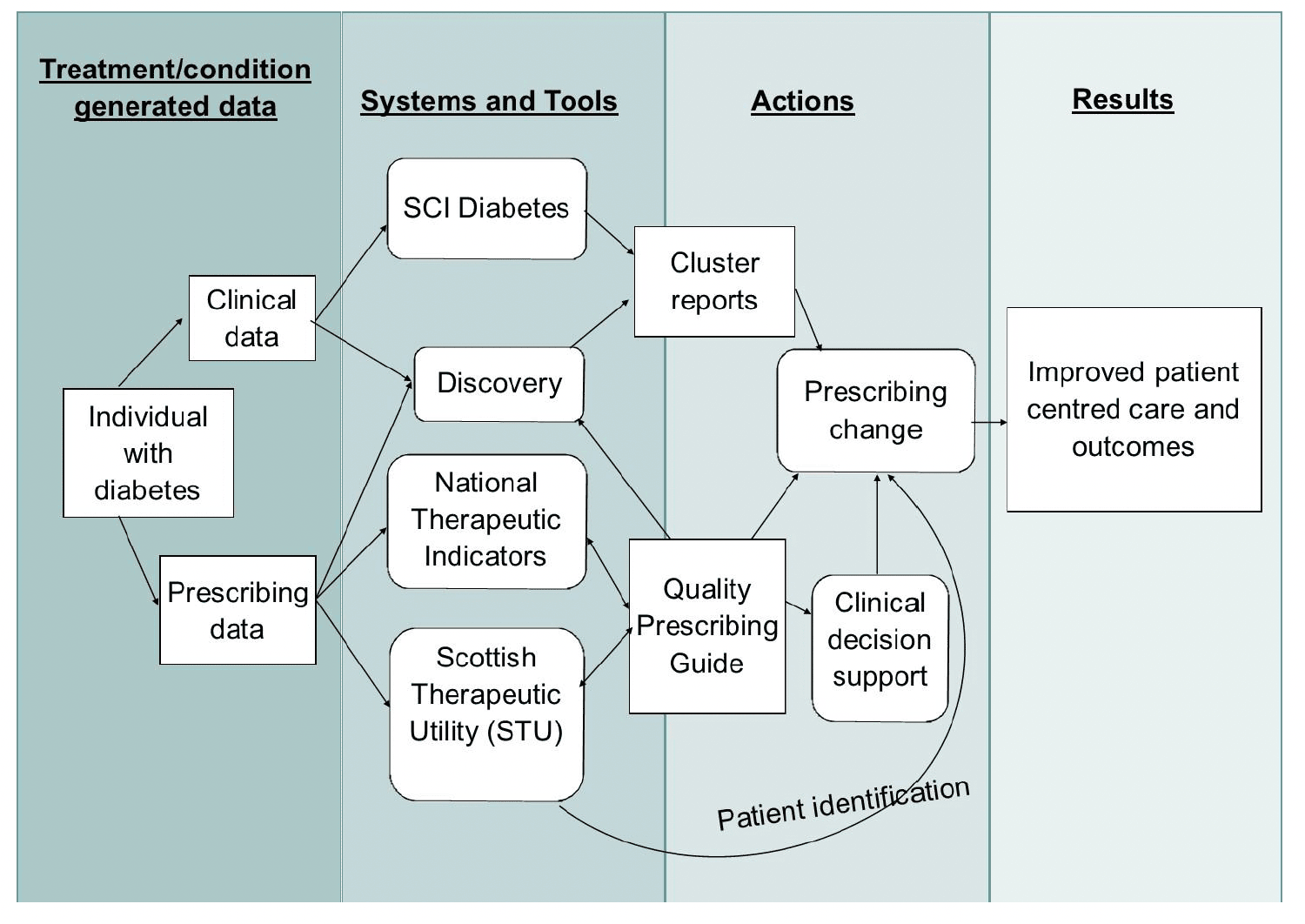
Graphic text below:
Treatment / condition generated data:
- Clinical data
- Individual with diabetes
- Prescribing data
Systems and tools:
- SCI Diabetes
- Discovery
- National Therapeutic Indicators
- Scottish Therapeutic Utility (STU) → patient identification
Actions:
- Cluster reports
- Prescribing change
- Quality Prescribing Guide
- Clinical Decision Support
Results:
- Improved patient centred care and outcomes
The tables below outline the systems and resources available to monitor and utilise data, and how to use them.
Table 10: National Therapeutic Indicators (NTIs)System/resource:
What is it?
National Therapeutic Indicators (NTIs):
An indicator of clinical practice.
National Therapeutic Indicators (NTIs), use prescription data to provide a measure of prescribing activity in specified therapeutic areas for comparison across NHS Boards, Health and Social Care Partnerships (HSCPs), GP clusters and GP practices.
System/resource:
Who can access/use?
National Therapeutic Indicators (NTIs):
National Therapeutic Indicators are online with open access to anyone.
System/resource:
Why? What for?
National Therapeutic Indicators (NTIs):
NTIs benchmark prescribing across set parameters (usually defined by expert working groups to identify areas for improvement within a particular area).
Data is presented in a variety of ways.
Examining variation over time can indicate where improvements in prescribing can be made.
Indicator detail provides further detail and suggested actions.
Example
Both charts below show a reduction over time in the quantity of sulfonylureas, but Chart 10 shows clearly to NHS boards where review of prescribing may be required in comparison with the Scottish average.
Prescribers can then identify individuals who may require a change to their current medication using the Scottish Therapeutics Utility (STU) at an individual practice level. This allows changes to be made in the individuals clinical record.
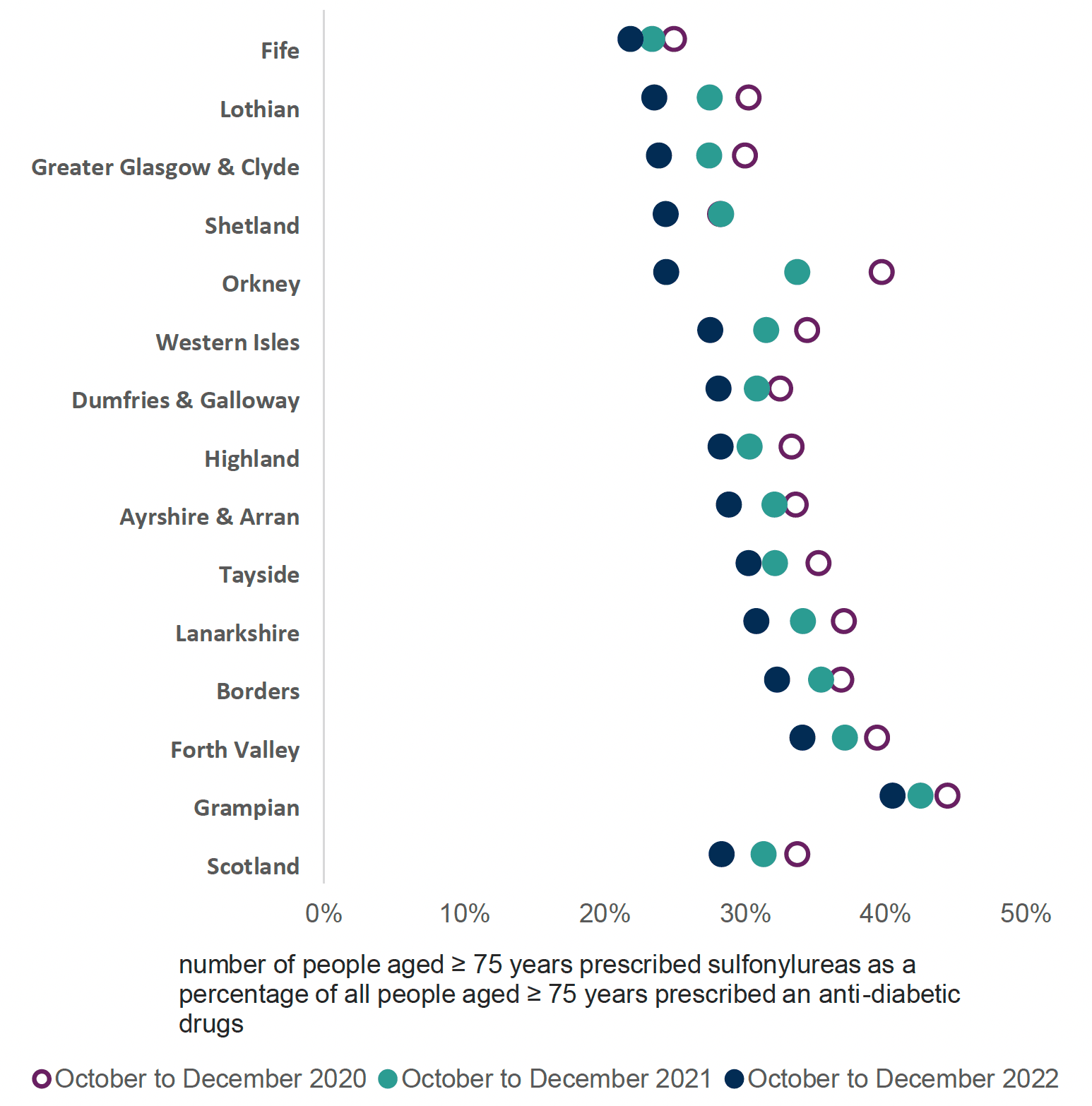
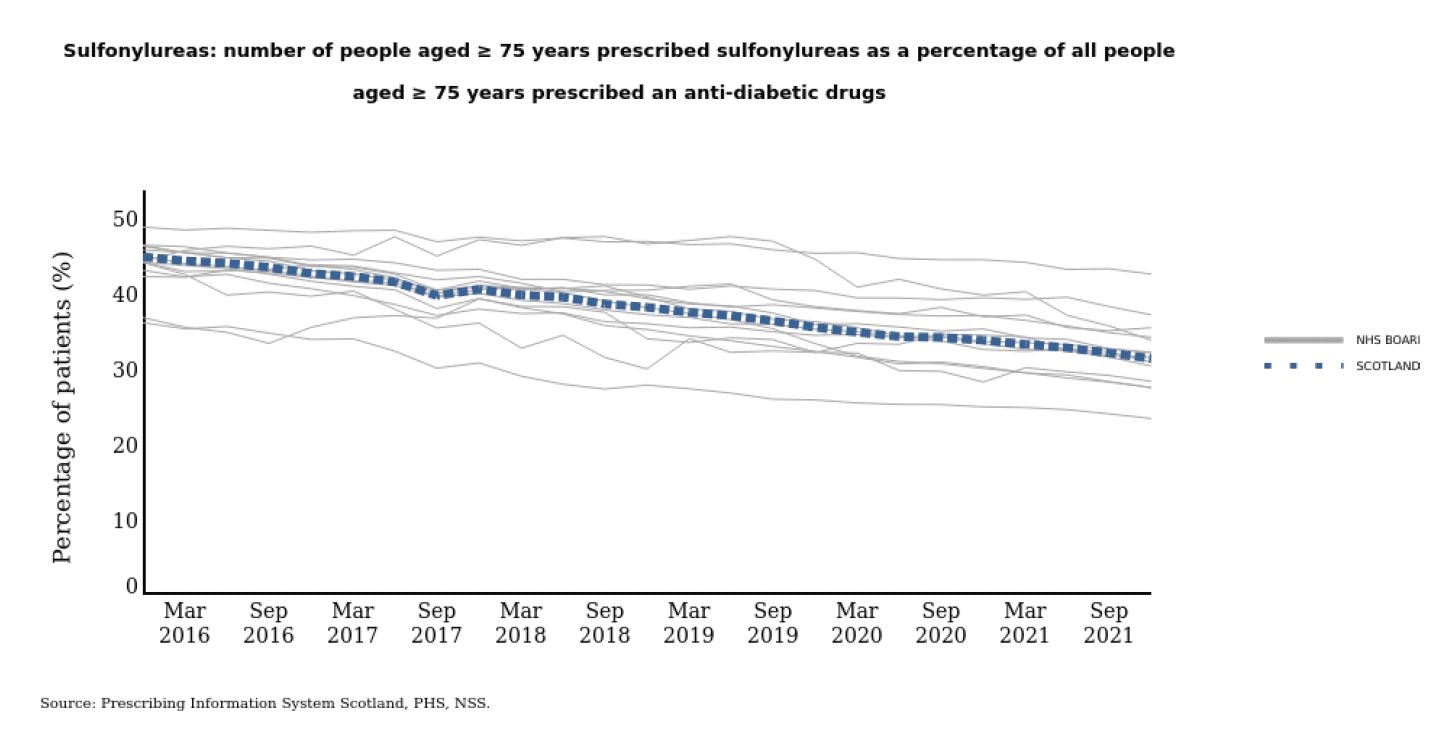
Table 11: Scottish Therapeutics Utility (STU)
System/resource:
What is it?
Scottish Therapeutics Utility (STU):
A system to identify individuals in general practice, according to a set of pre-defined parameters, such as prescribing and clinical data (including read coding).
STU focuses on identifying people to improve prescribing practice and improve medication safety.
System/resource:
Who can access/use?
Scottish Therapeutics Utility (STU):
GP practice staff only.
Instructions and download information is available at: EScro Home Page.
System/resource:
Why? What for?
Scottish Therapeutics Utility (STU):
STU was developed to improve safety, optimise efficiency and reduce avoidable waste (processes and costs), particularly in relation to repeat prescribing.
The utility allows users to interrogate their prescribing data in real time and provides graphs to identify trends in repeat prescribing.
STU includes reports which identify areas of high risk prescribing. This supports clinicians in reviewing individuals at risk to determine if prescribing is necessary and how the risk can be reduced.
Example
The diabetes indicators (developed from the NTIs and prescribing guide) highlight the number of people in each indicator. From each indicator title, the names of individuals are shown and their precribing record summarised below.
STU has the facility to open the patient record to allow changes directly in EMIS or Vision. Sample database screenshot below.
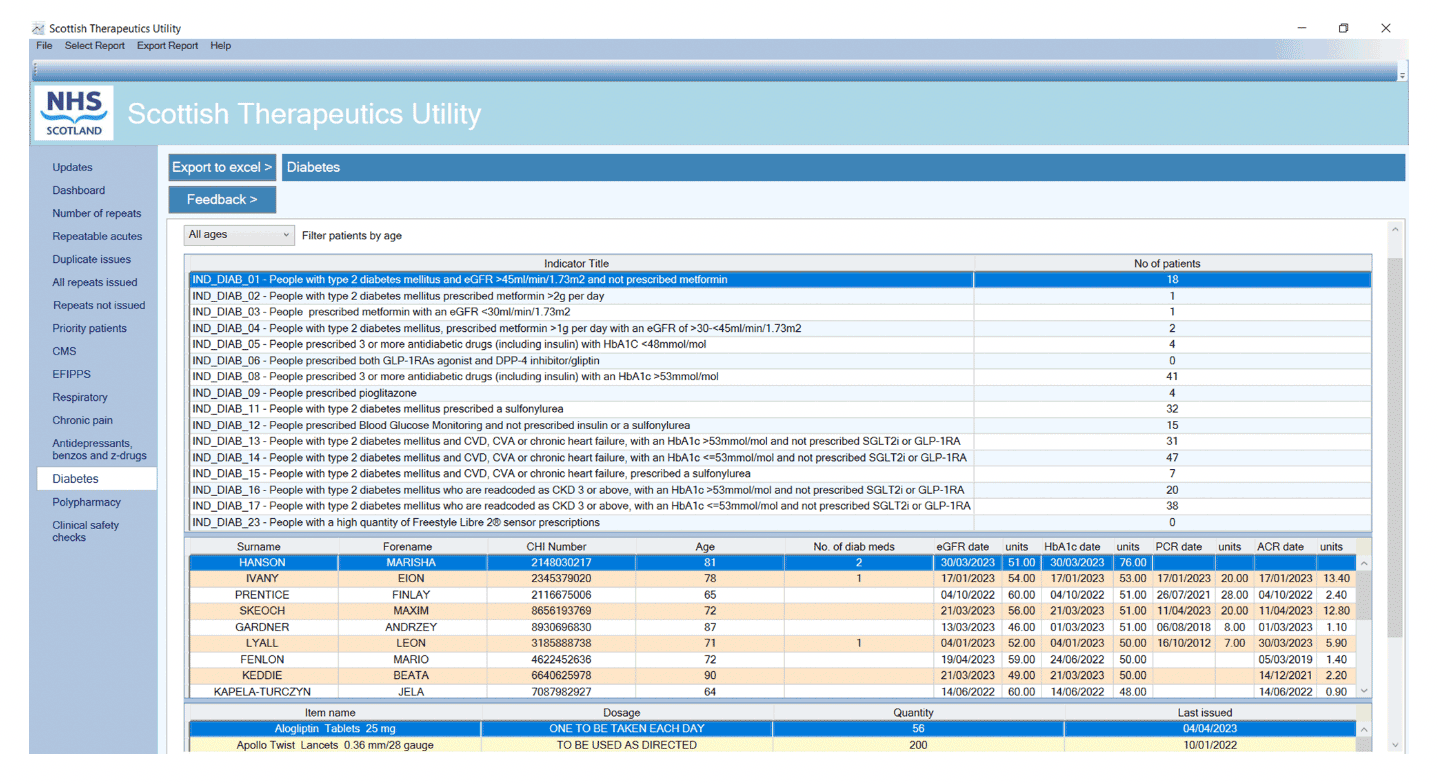
Table 12: Discovery
System/resource:
What is it?
Discovery:
Discovery is an information system that provides approved users from the Scottish Government, Health Boards, local authorities and Health & Social Care Partnerships with access to a range of comparative healthcare information to support performance and quality improvement across Health & Social Care in Scotland. There is a prescribing dashboard, including measures including: Polypharmacy, Primary and Secondary Care Expenditure and Secondary Care Use of Medicines (HMUD).
System/resource:
Who can access/use?
Discovery:
NHS Staff (including Board staff, GPs), Public Health Scotland (PHS) and Scottish Government. There are different security levels. Level 1 allows access to Board level data. Level 2 allows access to general practice level data.
System/resource:
Why? What for?
Discovery:
Discovery provides comparative and benchmarking information to underpin service planning and delivery.
Example
The example below is from the Polypharmacy dashboard:
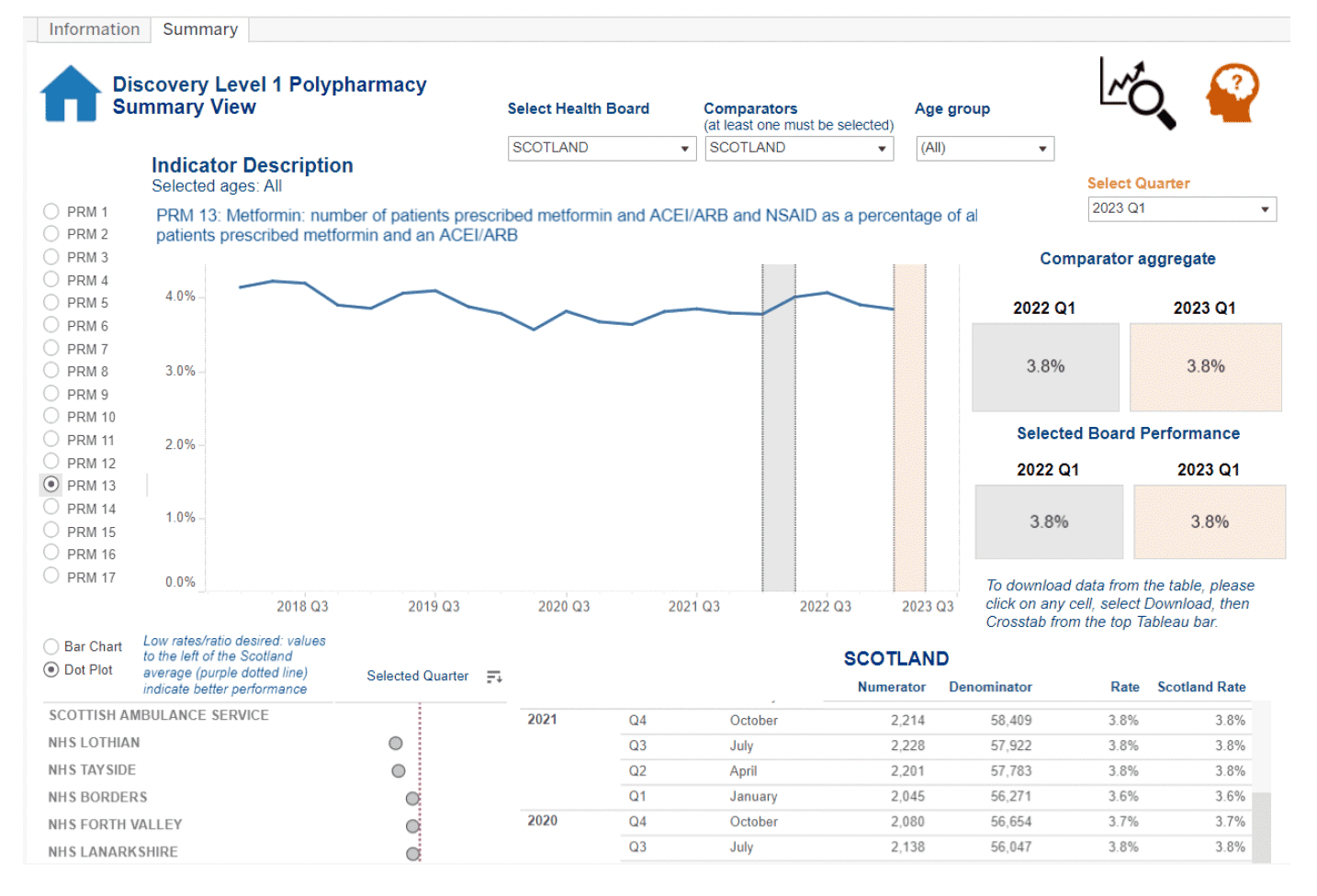
Table 13: SCI-Diabetes
System/resource:
What is it?
SCI-Diabetes:
SCI-Diabetes is the national clinical system for supporting Diabetes Care within NHS Scotland.
System/resource:
Who can access/use?
SCI-Diabetes:
NHS Staff including NHS Board staff and GPs. SCI-Diabetes provides a single Diabetes system for NHS Scotland. Users are aligned to ‘Domains’, which are cohorts of patients under the care of a particular clinic or service.
Patients and users can be aligned to multiple domains. Access to the application is managed by administrators within each NHS Board.
System/resource:
Why? What for?
SCI-Diabetes:
SCI-Diabetes delivers a shared electronic record for use by all involved in the provision of diabetes care.
SCI-Diabetes provides modules of multi-speciality input for Diabetes care from:
- Primary Care (Complementary to the GP System)
- Adult Hospital Clinicians
- Paediatrics – Including Transitional care
- Diabetic Specialist Nursing
- Dietitians
- Podiatry
SCI-Diabetes also provides support for:
- service Improvement
- local reporting and national reporting
- research
Example
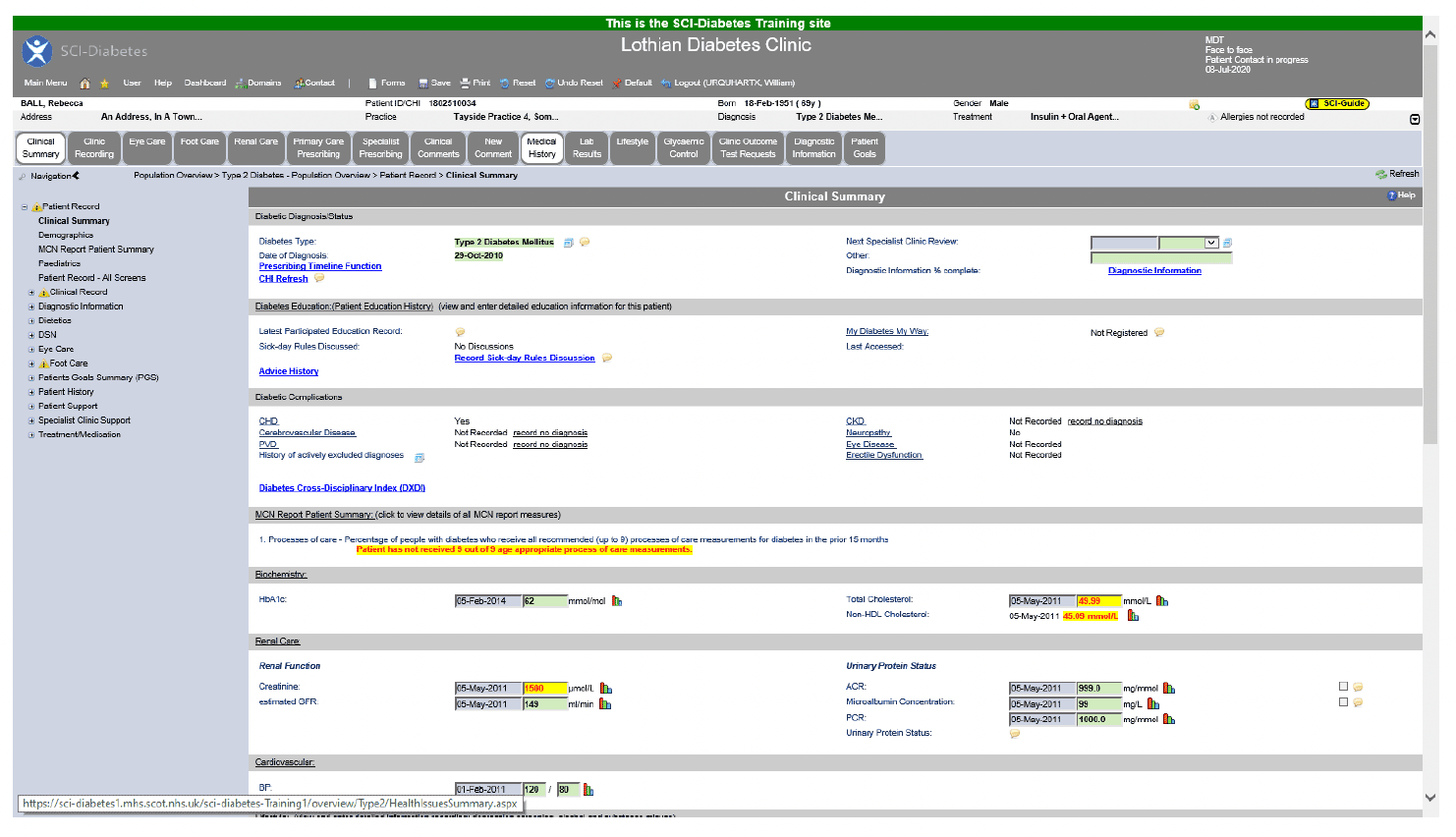
Contact
Email: EPandT@gov.scot
There is a problem
Thanks for your feedback